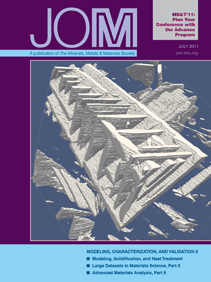VISIT THE
JOM COVER GALLERY
JOM
HOME PAGE
TABLES
OF CONTENTS
HTML-ENHANCED
ARTICLES
MATERIAL
MATTERS
CONSULTANTS
DIRECTORY
PROFESSIONAL PREFACE
SUBJECT
INDEXES
MEETINGS
CALENDAR
TECHNICAL
EMPHASIS CALENDAR
AUTHOR'S
KIT
AUTHOR
BIOGRAPHY/ABSTRACT SUBMISSION FORM
BOOK
REVIEW PROGRAM
ADVERTISING
INFORMATION
RESERVE
A CLASSIFIED
SUBSCRIPTIONS
SINGLE
ISSUE PURCHASES
|
|
Using the United States Patent Office Website as a Research
Resource
David V. Radack
The United States
Patent and Trademark Office (USPTO) maintains an information-rich
website that can be extremely valuable as a research tool. The only
official website of
the USPTO, www.uspto.gov
contains enormous amounts of searchable information regarding specific
patents and trademarks, a listing of patent and trademark laws and
regulations, and news items regarding current issues.
To use the website (as currently configured), go to the home
page and click on the area that is of interest, either “Patents”
or “Trademarks.” By clicking on “Patents,” users
are presented with a comprehensive table of contents that lists all
of the resources available on the website.
For research purposes, the portion of the website that probably is
of most interest is available by clicking on “Search Patents.”
This entry leads to a menu of different types of searches that can
be performed in the respective databases.
A very useful search is simply titled “Patent Number Search.”
This is helpful for users who have a particular U.S. patent number
and would like to obtain a copy of the same. By typing the patent
number in the box provided on the search page, users will immediately
obtain access to a data sheet that contains the abstract, bibliographic
data (such as, for example, the name(s) of the inventors, the entity
that owns the patent, and the filing date of the application), the
references that were cited in the application, and a listing of all
of the claims of the patent. A copy of the full patent, with drawings,
can be accessed by clicking on “Images” at the top of the
data sheet. The full-page images are in a file format known as tag
image file format (TIFF). In order to view these files, your workstation
must have a browser plug-in, similar to those required to access ADOBE®
portable document format (PDF) files. The ability to view and print
full patent images is a great time- and money-saver because, prior
to the availability of these patents on the USPTO
website, copies of patents had to be ordered (and paid for) from
libraries or commercial services.
Many times, however, a patent number is not available and it is desired
to search other patent information. This is where the “Advanced
Search” feature is useful. For example, to find patents under
a certain inventor’s name, type in the inventor’s name (preceded
by the proper field code term, in this case “in” followed
by a forward slash [“/”]), and the website will list all
patents issued in that person’s name.
Similarly, a list of all patents owned by a certain company is available
by typing in the company’s name preceded by the correct field
code (this time “an” for assignee name then a forward slash
[“/]). There are numerous other field codes listed, such as title,
issue date, attorney name, and application serial number, which can
be used for other targeted searches when specific information is provided.
Another useful feature of the searchable patent database is the ability
to use the extensive U.S. patent classification system to search for
patents relevant to a particular subject matter. In this way, a very
preliminary patentability search of an invention can be performed.
By clicking on the phrase “Tools to Help in Searching by Patent
Classification,” a listing of all current U.S. classes and subclasses
can be displayed. A text search for a particular subject matter can
be done, and by means of that search, a class and subclass listing
can be obtained. For example, if someone came to me with an invention
for a new golf putter, I could determine the class/subclass for putters
and get a listing of all of the patents listed in that subclassification.
A warning is in order here: Patent searching is more of an art than
a science, and it requires much skill and experience to do a competent
and thorough search of an invention. The USPTO
website search described above is simply a way to provide a general,
very preliminary idea of the state of the art. Under no circumstances
should these searches be relied upon to provide definitive opinions
concerning the patentability of an invention.
While pending patent applications have traditionally been maintained
in confidence, under newly enacted patent law legislation certain
relatively recent patent applications are now being published. The
ability to search and view published patent applications can give
a more current view of a particular company’s or individual’s
patent activity. This can be an invaluable resource for keeping tabs
on competitor’s research activities and focus.
Space does not permit an extensive discussion of the trademark portion
of the website; however, this area of the website is also easily searchable.
In contrast to patents, all trademark filings are immediately made
public, and the website can be used to check the status of every trademark
filing. This is an invaluable source of easy-to-obtain, current information
concerning trademark application filings and registrations.
David V. Radack is vice-chair of the Intellectual
Property Department of Eckert Seamans Cherin & Mellott, LLC in
Pittsburgh, Pennsylvania.
For more information, contact A.B. Silverman at Eckert
Seamans Cherin & Mellott, LLC, 600 Grant Street, 44th Floor, Pittsburgh,
Pennsylvania 15219; (412) 566-6000; fax (412) 566-6099; e-mail abs@escm.com.
|

